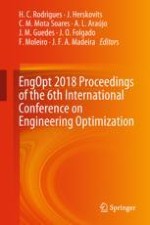2019 | OriginalPaper | Chapter
Trajectory Optimization of Industrial Robots with a Feasible Direction Interior Point Algorithm
Authors : Michel Alba, Luiz Ribeiro, Jose Herskovits
Published in: EngOpt 2018 Proceedings of the 6th International Conference on Engineering Optimization
Publisher: Springer International Publishing
Activate our intelligent search to find suitable subject content or patents.
Select sections of text to find matching patents with Artificial Intelligence. powered by
Select sections of text to find additional relevant content using AI-assisted search. powered by
